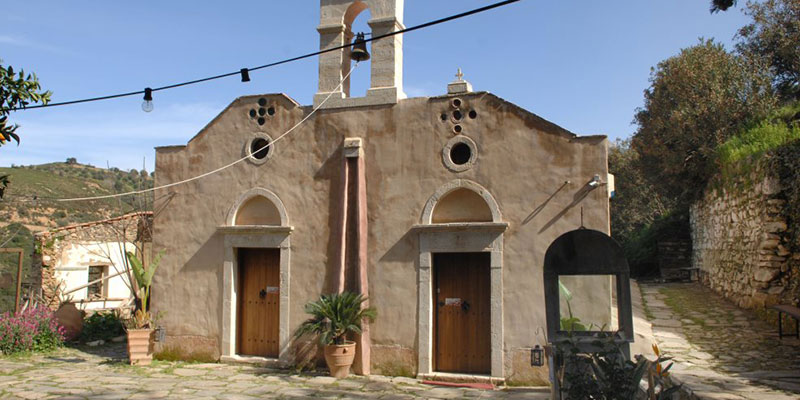Surrounded by mountains and hills, Casa Blue Villa located near Agia Pelagia, lies right in the middle of Crete which makes it easy to be used as a base for tours and excursions around Crete island.
Apart from the main beach of Agia Pelagia Bay, you can also visit the bay of Lygaria, the bay of Mononafti and Psaromοura beach. There are also several (very small, almost hidden) beaches in the area (many of which can only be reached on foot or by boat).
Near Agia Pelagia you will find many interesting places to visit, such as the traditional villages of Achlada and Fodele (the birthplace of the famous painter Domenicos Theotokopoulos "El Greco"), where you can visit the museum, the old Byzantine church of Panagia and the Holy Monastery of Agios Panteleimonas.
Agia Pelagia
Agia Pelagia is a seaside fishing village built in the centre of a picturesque amphitheatric bay. During the last decades years, the resort has known a big tourist development, as its sandy beaches attract many visitors who find here all kinds of services. In the village you can find many taverns, offering traditional but also international dishes, bars, cafes, shops and boutiques, which will invite you to exciting short walks through the little streets.
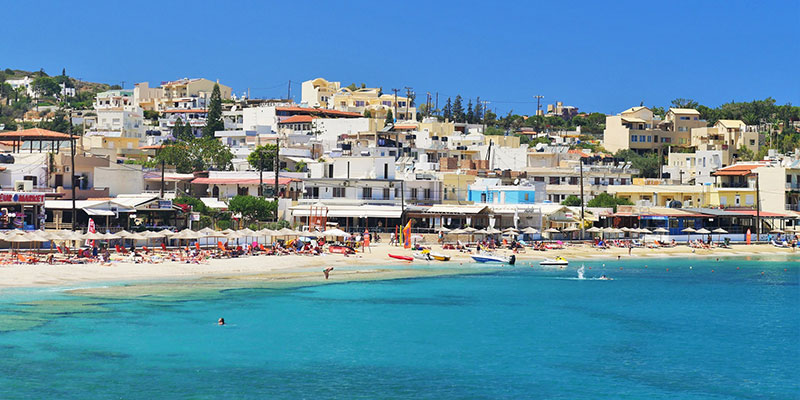
Lygaria
Located at the east end of the region (east of Agia Pelagia), this long coarse sandy beach (420m) is often quieter than its neighbouring bays, particularly during the week. Even at the weekend, when the locals arrive from nearby Heraklion, it is still very enjoyable but it is worth arriving early to ensure a parking spot not too far from the beach. The beach offers generous spacing between sunbeds and good swimming. There is also good parking, public changing and washroom facilities, and facilities for those with disabilities. The water at Lygaria beach is deep but generally calm due to the protection of the steep rock surrounding the bay making it ideal for couples and families looking for a peaceful and relaxing beach.
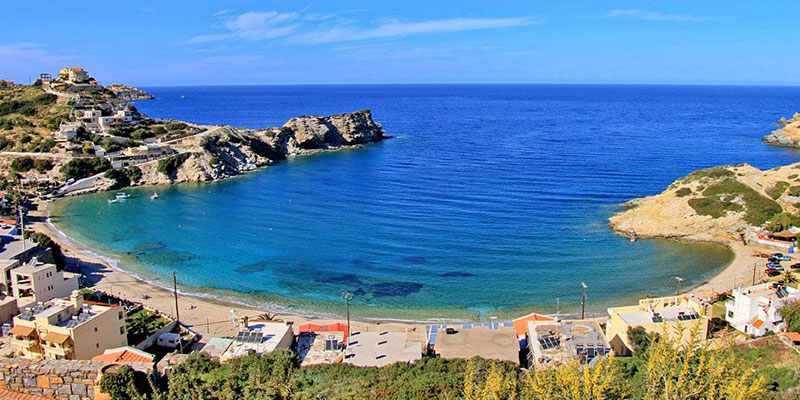
Mononaftis Beach
Mononaftis is an organized beach located in the northernmost part of Agia Pelagia area and is protected by the northern winds as it looks east. This makes Mononaftis, but also the several beaches in this area, very popular with the locals, especially when the northwest wind blows.
It is a small beach (80m long) with crystal clear waters which deepen suddenly and may often be very busy but this doesn’t affect the relaxed atmosphere. It is a sandy beach with small pebbles and randomly rocky seabed in some parts. The straw beach umbrellas give the place a retro feel and this is part of the charm of the place, although there are good amenities with changing hut, showers and a lifeguard.
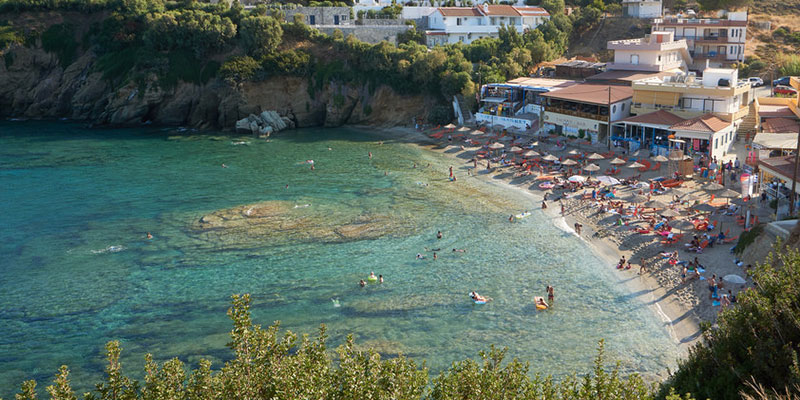
Psaromoura Beach
Psaromoura beach is located about 500 meters from Agia Pelagia. It is rather small, with sand, pebbles and some rocks and it is a preferred destination for the weekend by the locals. Umbrellas are available on this beach. However, it is not protected from the north winds. To reach it, you would need to continue on the road to Capsis Hotel and then ask for further directions. Several people consider Psaromoura beach as a serene place to relax in. There is also a small ice-cream and soda shop on this beach.
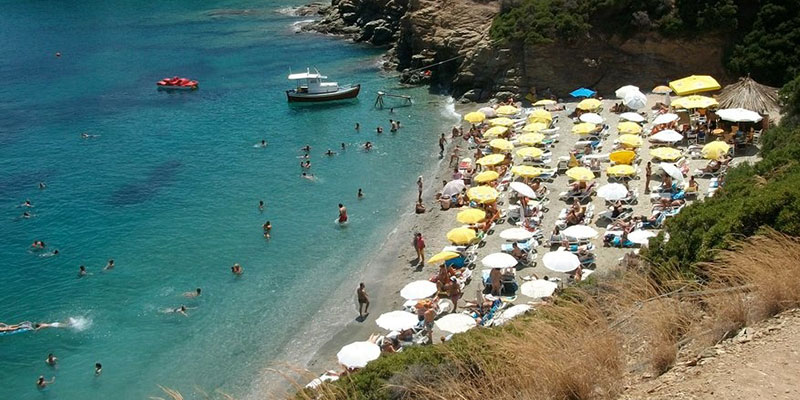
Achlada
Achlada village is built on the top of a fortified hill in the middle of a beautiful mountain landscape, high above the bay of Agia Pelagia tourism resort. Its name is plantamic - takes it from the wild boar tree (called pear) that can be found native in many places around the village. Τhe village offers excellent views over land and sea. The main attractions of Achlada are the double holy temple of Agios Ioannis & Agios Tryfonas, with remarkable wood-carved iconstasi added in the year 1860 which is of great beauty. Other spots to visit are the stone fountains ("Krini" of Achlada) on the north side of Achlada (the oldest of which was built in 1746) as well as the ruins of the village of Kantinos (with 48 houses, 5 churches and 2 windmills).
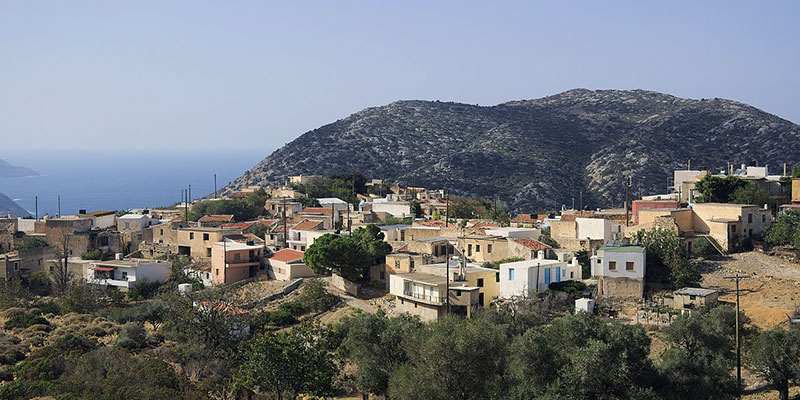
Fodele
Fodele is a very beautiful and traditional village, located just 3km from the beach (Fodele beach) and is distant only 10km from Agia Pelagia village. It’s a rural village that is very charming and popular among local people and tourists on Crete. Take a walk to the surrounding areas just outside the village to enjoy the beauty of the Cretan landscape and flora.
Fodele is built in a large area of orange, mandarin, lemon and olive groves famous for the optimal quality of all its agriculture products (especially the oranges/mandarins) and it’s an area particularly beautiful as a landscape. Fodele is very green. A very pretty park next to the main square of the village offers dense shade and several sites for walk and picnic. The small river that crosses the middle of the village has water running through even in early summer which is rare for most places on Crete.
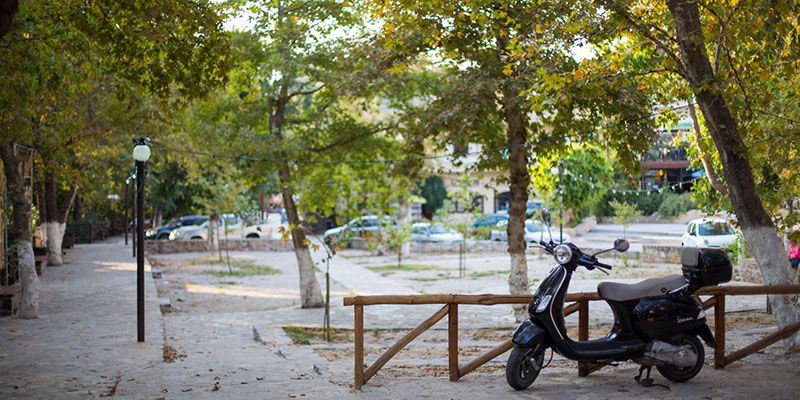
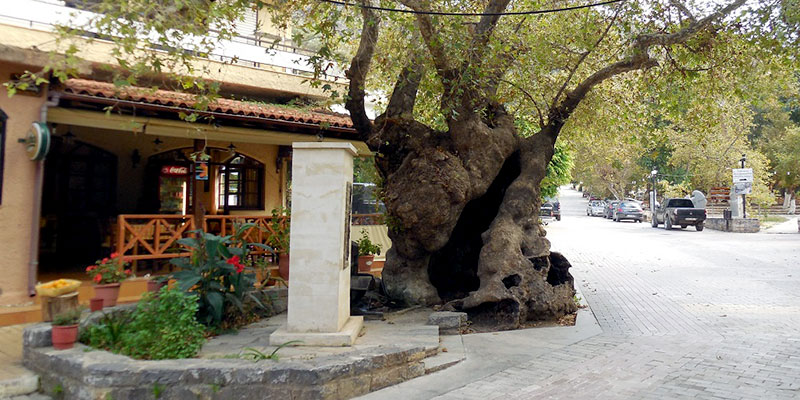
The whole area around Fodele is lush and verdant. There are several traditional taverns that offer excellent food and shops with ceramics and handcrafts. Fodele is a very popular destination for the people in Heraklion city and the surrounds, who use often to visit Fodele in the weekends to enjoy a walk in the nature and the good food offered in the area. Take the short route to the top of the village as it offers wonderful views across the Fodele valley.
Besides being a very interesting and attractive place on its own, Fodele is the birthplace of the famous painter Domenicos Theotokopoulos "El Greco" ("the Greek" in Spanish). Do not miss to visit the El Greco museum in Fodele, the old Byzantine church of Panagia and the Holy Monastery of Agios (St.) Panteleimon.
Domenicos Theotokopoulos (El Greco) Museum
The museum of Domenicos Theotokopoulos is located at the site of "archontika" in the beautiful setting of Skoteini, near the Byzantine church of Panagia.
The museum is housed in a renovated post-Byzantine building complex and is open to the public since 1998. About ten thousand people visit the museum every year.
The exhibition includes a small collection of reproductions of the works of the great painter, commonly known as "El Greco".
Next to the museum there is a rest area and a cafeteria under the shadow of the centuries-old trees while a bit further there is a stone-built water well, part of the post-Byzantine farm.
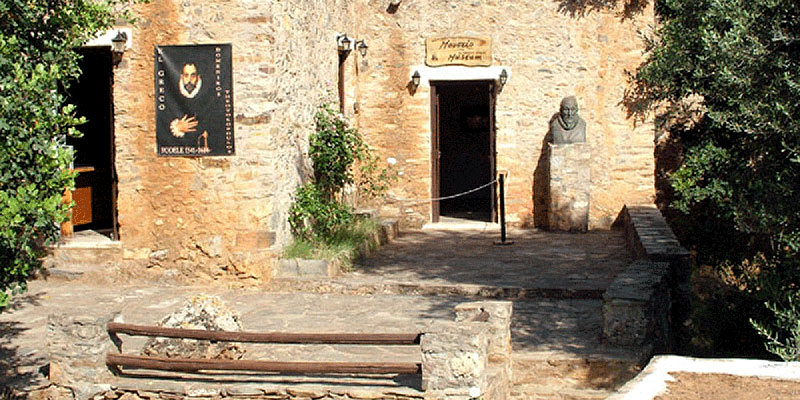
Byzantine church of Panagia in Fodele
Next to the museum of Domenicos Theotokopoulos (El Greco) in Fodele is the 14th century Byzantine church of Panagia (Holy Mother), a beautiful church with unique murals. Was built on the site (central and eastern part) of an early Christian basilica, an older church of the 8th century (a basilica with three aisles - only a few architectural traces of this previous church exists). It’s a four-pillared domed church (Greek School). Its' interior is decorated with beautiful frescoes in three/four layers. The oldest layer is an artistically significant example of church frescoes from this period on the island of Crete.
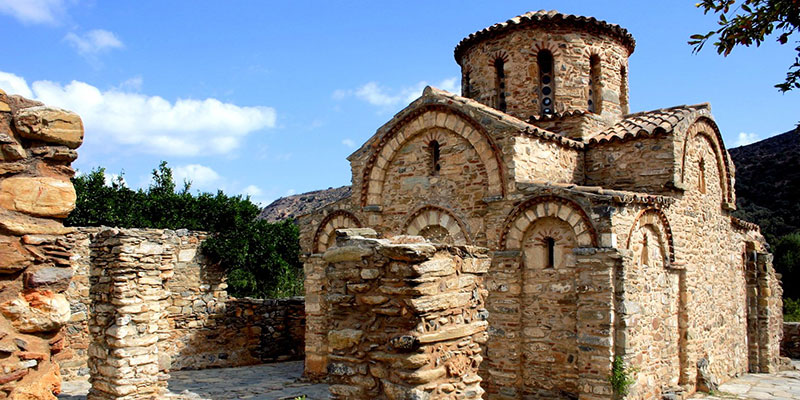
Holy Monastery of Agios (Saint) Panteleimon
Visiting the monastery will definitively reward you if you are a lover of nature as driving among the olive, orange and mandarin groves right after Fodele towards the inland and after just 3,8km will bring you to the mediaeval monastery of Agios Panteleimon. It was built in the last period of the Venetian occupation of Crete, with fortress architecture. Among the most important sacred relics is part of the hand of Agios Panteleimon and four icons from 17th century, works of Michael Damaskinos and also "Archangel Michael", works of the famous Cretan school of icon painting.
